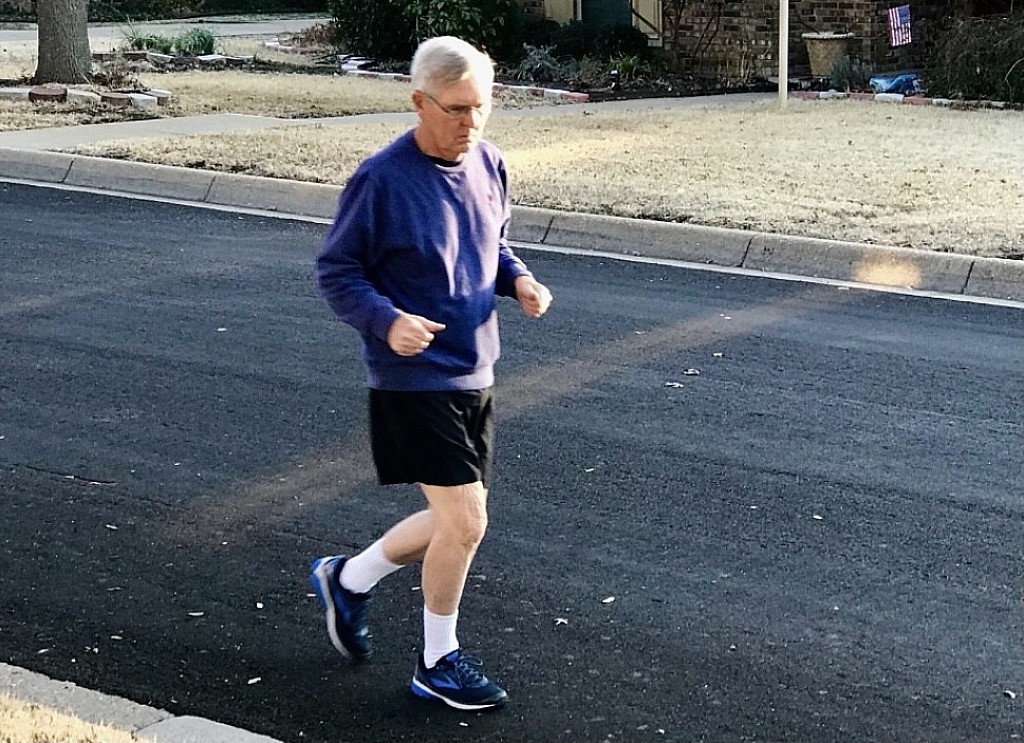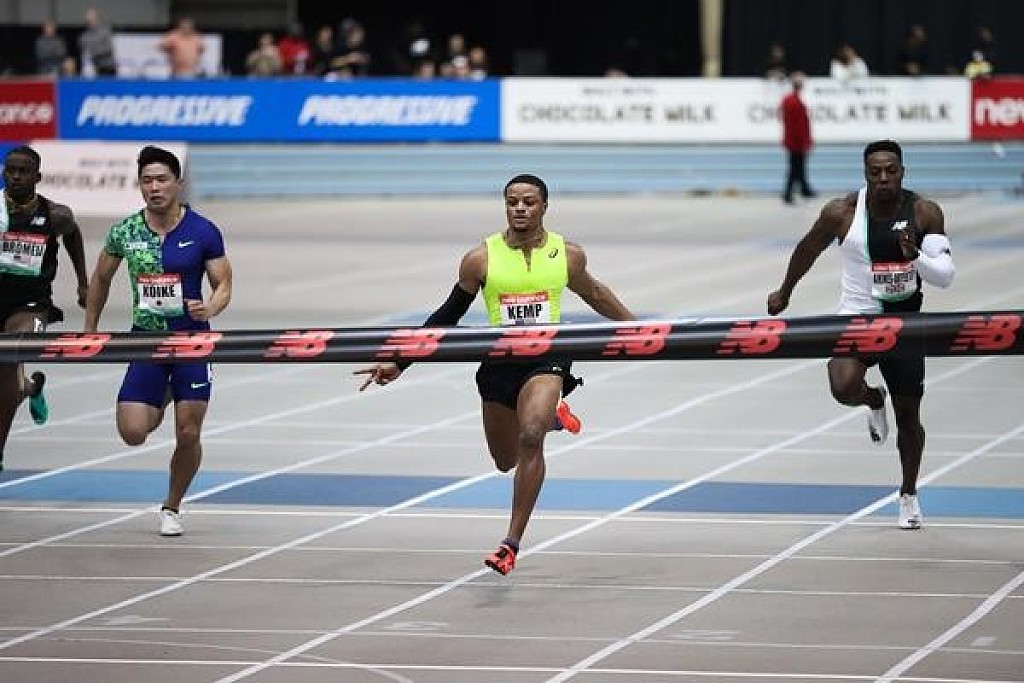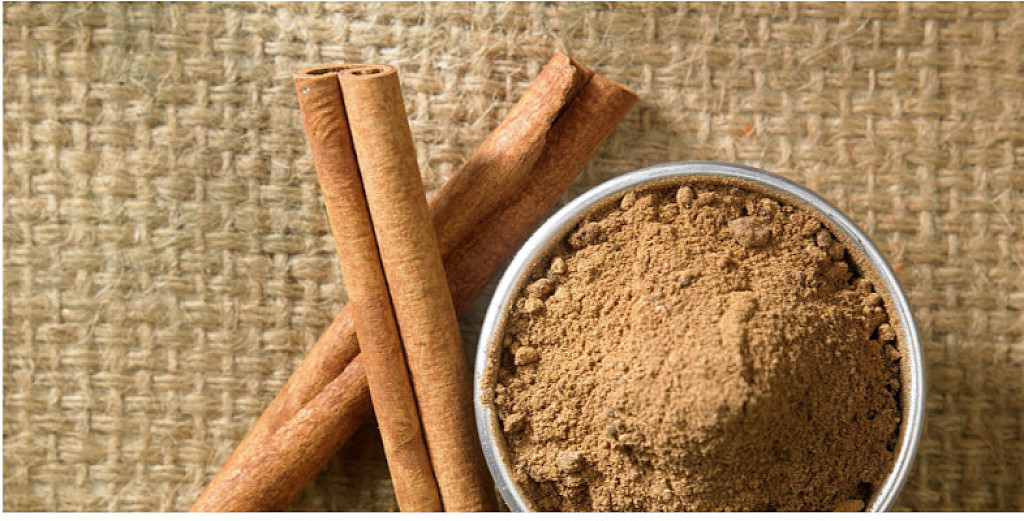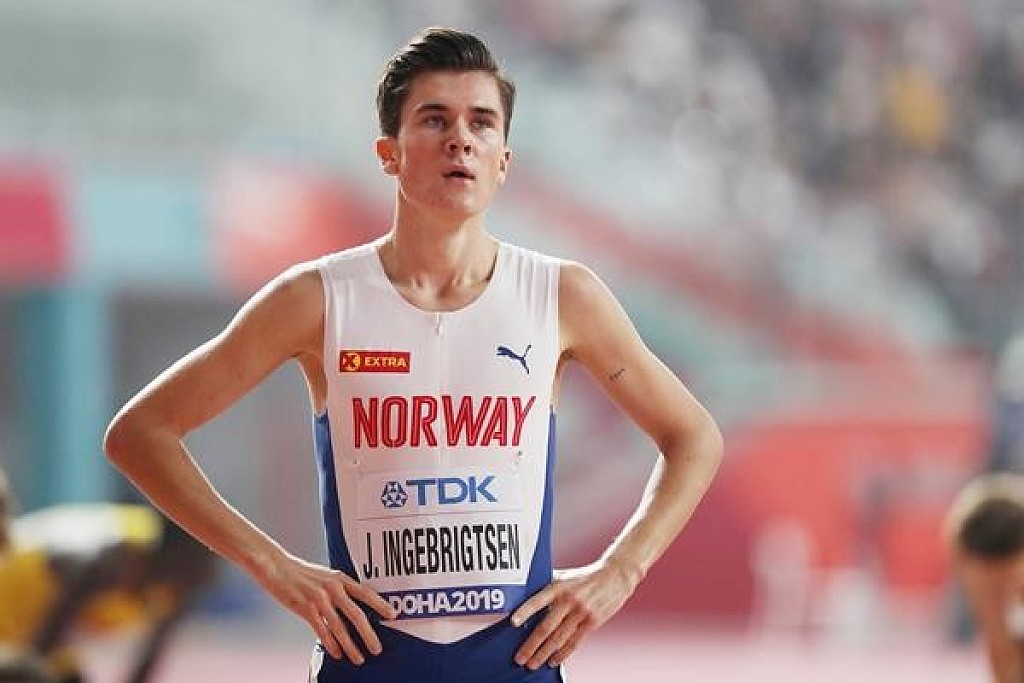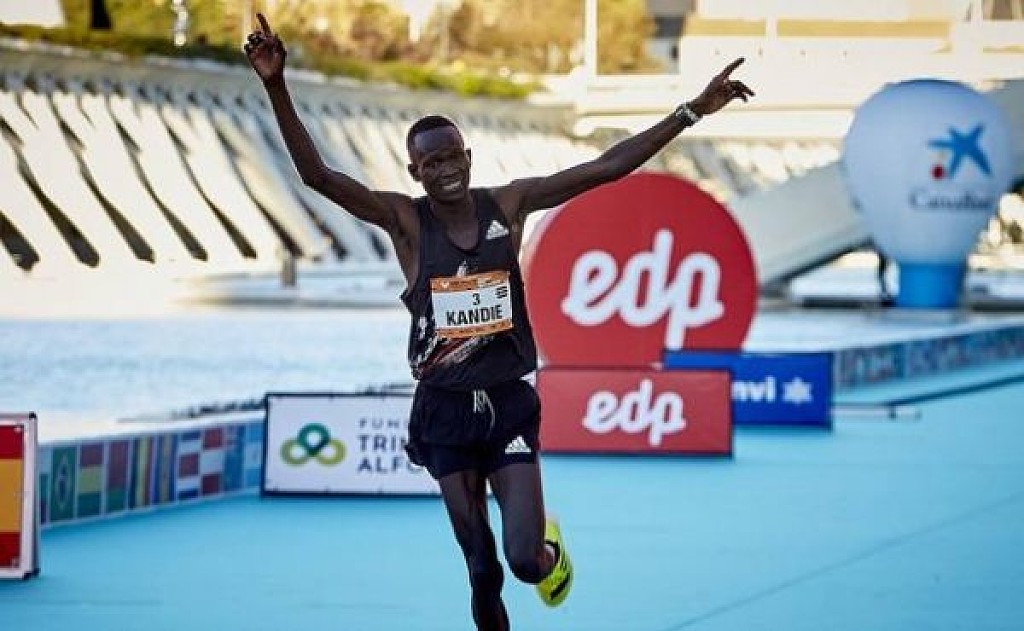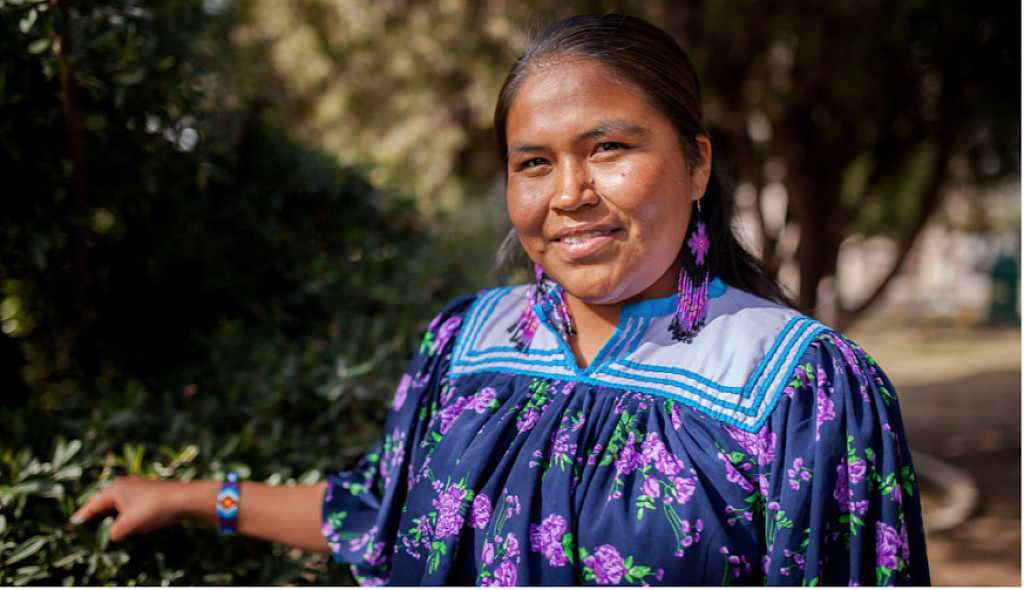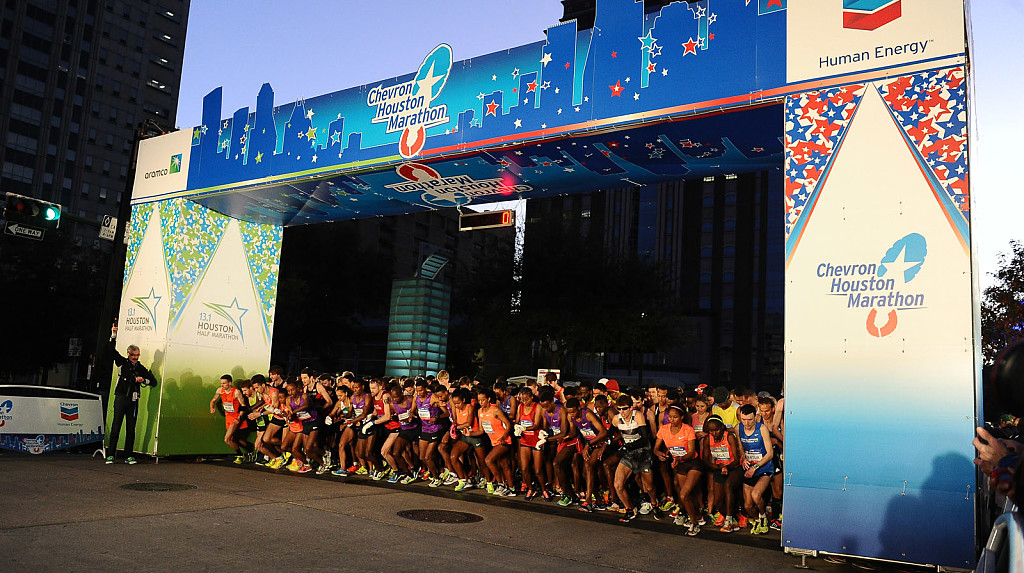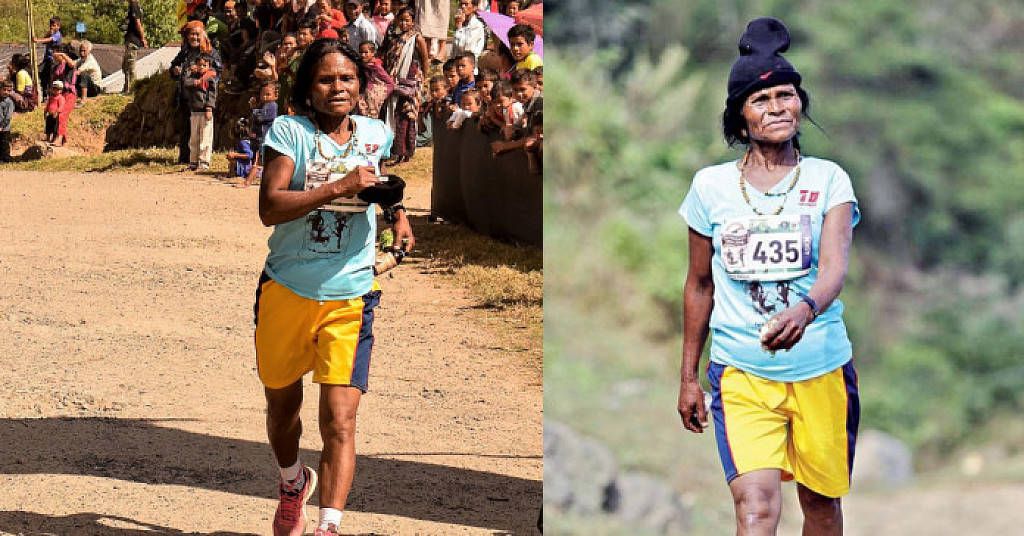Running News Daily
Top Ten Stories of the Week
1/9/2021
These are the top ten stories based on views over the last week.
Bill Anderson ran at least one mile every day for over 44 years has passed away
Bill Anderson has passed away. He has been fighting prostate cancer since 1999.
"He was a fighter," says his brother Bob Anderson (director of My Best Runs). "I know he would be proud to know that he was able to run a mile just ten days before his death. R.I.P. The world will miss you."
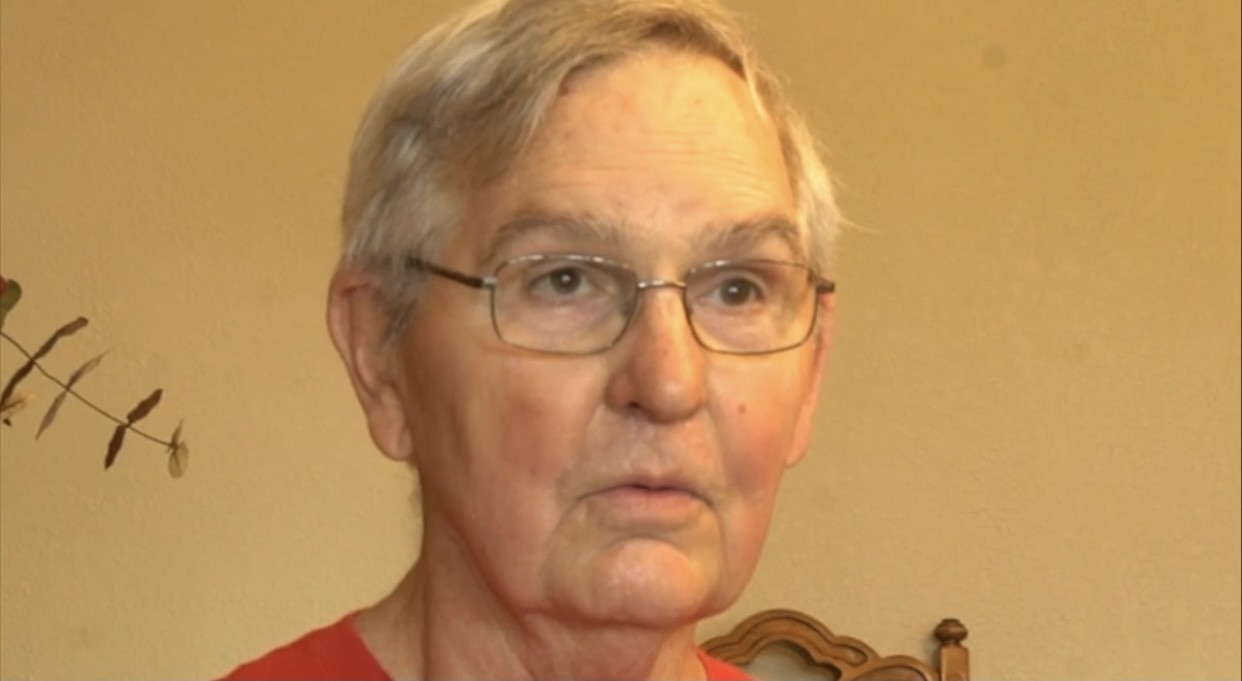
In 2018 he shared his secrets with MBR. Bill Anderson (72) started his running streak on September 27, 1976 in Fort Worth Texas. He has run at least one mile everyday since then. He is currently number ten on the Official USA Active Running Streak List.
"My brother Bill has never been injured," says Bob Anderson. Asked why he has never been injured he says, "Shoes are the hidden secret to avoid injuries. I make sure they are always fresh," Bill says.
"Secondly I always run within my capacity. Thirdly, I make sure I enjoy every run. Fourth, I know myself well enough to anticipate a potential issue before it happens."
His daughter (Barb) posted this on FB on December 23, 2020.
“The Streak has ended…
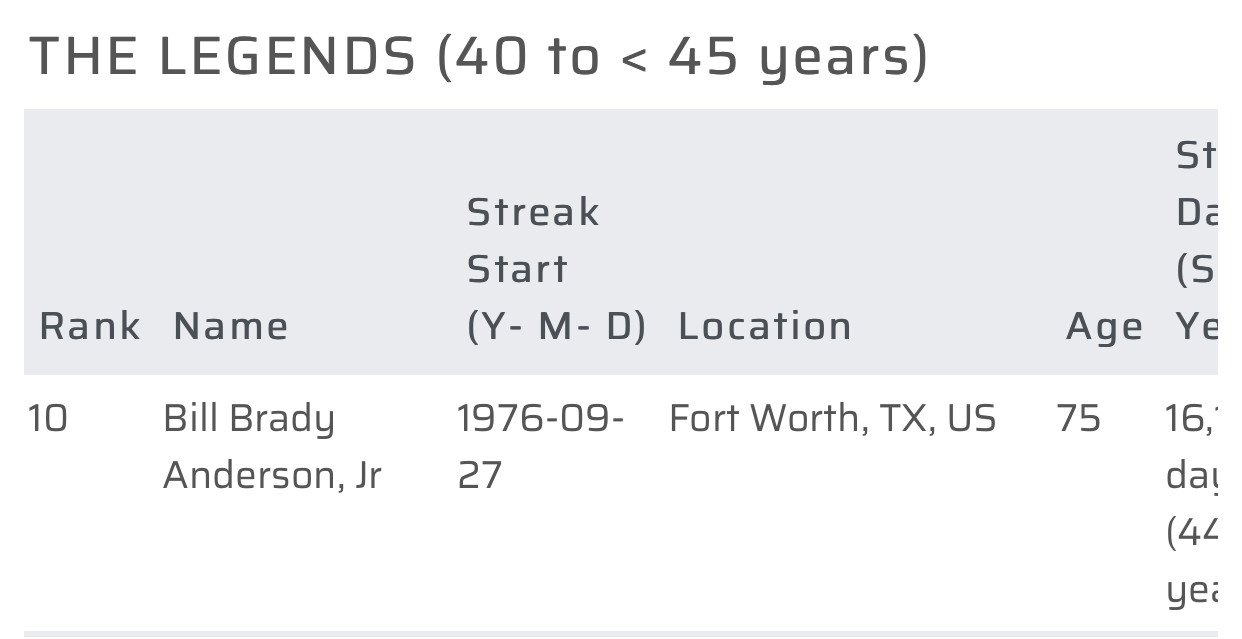
My dad did not do something yesterday that he’d done the past 16,000 + days – he did not go run at least one mile.
On September 27, 1976, he went for a run…I was 2 years old. He continued that for 44 years, 2 months and 25 days and ended his running career with the 10th longest documented running streak in the United States.
The rules? At least one mile, outside, in running shoes.
At some point the streak became another family member that we’ve all formed a complicated relationship with, especially my mom, who has worried about him, followed him in the car in the hail or after a little too much to drink, cursed the inconvenience of the “damn streak” on occasion and supported him every day.
When I was in high school, I started running with him. The first time I ran four miles, I was with my dad and we had about a third of a mile to go, all uphill. I was ready to quit when he calmly said, “At this point it’s really just a matter of one’s character.” I didn’t stop.
I’ve run with him numerous distances, in numerous locations, sometimes in formal races and sometime just around the hood. But my dad’s run in every state, dozens of countries and incredible ranges of temperatures and weather conditions, juggling time zones, international date lines, snow, wind, rain, prostate cancer surgeries, bladder cancer, Parkinson’s, nine chemo cycles, a ruptured appendix and age.
On Monday the 21st my mom practically pushed him out the front door and followed him in the car one last time, this time for concern of his mental acuity.
I ran with him on Tuesday the 22nd, not knowing but somehow feeling the final curtain call. We reminisced about our most memorable runs together – like the one time, a very low-to-the-ground bulldog joined us from nowhere and ran at least a mile right between us. We both thought that dog would go into cardiac arrest. At some point he bailed on us but when we got back to the house, we jumped in the car to try and find him because we were convinced that he was dead, lost or both. We never did find him.
On Wednesday the 23rd after being rushed to the hospital, he announced with dignity, strength and no regret, that the streak was over.
He made the right decision. But I can’t help feeling like we lost a family member yesterday.
My dad has always been my hero. Dad, today I went for a run and even though I cried through half of it, I ran with new purpose and I crushed it. I love you.”
Click on link (the title) to listen to Bill talk about his streak.
(01/04/21) Views: 197BOSTON LEG OF WORLD ATHLETICS INDOOR TOUR RESCHEDULED
Organisers of the New Balance Indoor Grand Prix in Boston, part of the 2021 World Athletics Indoor Tour, have announced that the meeting will move from 6 February to 13 February 2021. Following the cancellation of the Millrose Games, which had been set to become the newest addition to the World Athletics Indoor Tour, the New Balance Indoor Grand Prix will now take the mid-February slot in the series.
The World Athletics Indoor Tour, which is now entering its sixth year, is a series of the very best one-day professional indoor track and field competitions in the world. Each season, athletes can score points in selected circuit disciplines. At the conclusion of the tour, the athlete with the most points earns the overall World Athletics Indoor Tour title in the event, a US$ 10,000 prize, and an automatic entry into the following World Athletics Indoor Championships.

In addition, this year World Athletics is expanding the indoor calendar with the introduction of three tiers of competition – Gold, Silver and Bronze – comprising 26 meetings spread across 12 countries in Europe and North America. The expanded schedule will broaden the geographical spread of meetings around the world and incorporate additional area level competitions. In North America, this will include the American Track League, which will feature three Silver and Bronze level meetings in January and early February.
The World Athletics Indoor Tour, which features the five Gold level meetings of 2021, will begin in Karlsruhe, Germany, on 29 January and the series will end in Madrid, Spain, on 24 February.
Due to the pandemic, the current plans are provisional, so dates and venues could change as the season approaches.
Calendar – World Athletics Indoor Tour - Gold
29 Jan – Karlsruhe, Germany
9 Feb – Lievin, France
13 Feb – Boston, USA
17 Feb – Torun, Poland
24 Feb – Madrid, Spain
(01/01/21) Views: 86Cinnamon Is a Hero of Holiday Spices. Here Are Some Unexpected Health Benefits
Here’s why you you should definitely add this spice to your fueling regimen.
“Cinnamon is an aromatic spice that comes from the dried bark of the cinnamomum tree,” says Robin Foroutan, M.S., RDN, and spokesperson for the Academy of Nutrition and Dietetics. “There are two main kinds of cinnamon: ceylon cinnamon, aka true cinnamon, and cassia cinnamon (less expensive and commonly used in processed food).”

Not only is this spice delicious, but cinnamon is also loaded with some unexpected health benefits of which runners can, and should, take advantage.
5 Health Benefits of Cinnamon for Runners
→ It may help balance your blood sugar.
Polyphenol antioxidants, found in cinnamon, may act like insulin, which means they assist glucose in moving out of the bloodstream and into cells. “This is important for runners because the faster sugar gets into muscles, the faster it can be burned for fuel,” says Foroutan.
→ It may help lower your cholesterol.
Animal studies have shown that cinnamon may play a role in lowering cholesterol concentrations in the body. In a study, mice that were fed a diet that included cinnamon extract had significantly higher HDL (good) cholesterol. Results showed it could also help lower total and LDL (bad) cholesterol, says Ginger Hultin, Seattle-based RDN, spokesperson for the Academy of Nutrition and Dietetics and owner of ChampagneNutrition.
“This seems especially true for those with high cholesterol and diabetes,” says Hultin.
A human study showed that out of people in the study using 1, 3, or 6 grams of cinnamon for 40 days, all three of the groups (but not the placebo) had lower triglycerides, LDL cholesterol, and total cholesterol, as well.
→ It may help blood vessel function.
Cinnamon has been shown to improve blood vessel dilation, which is the ability for your blood vessels to expand to allow better blood flow, in animal studies, says Foroutan. “Cinnamon is one of many natural foods that contain phytonutrients that help improve blood vessel dilation.”
This is important to runners, because blood flow is important for peak muscle and cardiovascular performance, however more research is needed to confirm the effect in humans.
→ It may help lower inflammation.
Previous small studies have shown that people who drank cinnamon tea had a higher antioxidant status than those who drank tea without cinnamon or hot water. This is likely because antioxidant flavonoids in cinnamon and the essential oils it contains, such as cinnamaldehyde, could act as free-radical scavengers (substances that protect cells from damage) and play a role in lowering inflammation, says Hultin.
Because exercise creates free radicals (unstable molecules created during normal cell metabolism) that can trigger inflammation, athletes need to go above and beyond to include plenty of foods that help the body balance inflammation. Foods that are high in antioxidants, such as cinnamon and other spices, help stabilize free radicals so they can’t inflame our cells and tissues, Foroutan says.
→ It can help reduce added sugar intake.
If you sprinkle some cinnamon on your food, the sweet taste of cinnamon can trick your tongue into thinking that a food is sweeter than it actually is. This can help people reduce the amount of added sugar they consume, says Foroutan.
Consuming too much added sugar is problematic for everyone’s health—even athletes, says Foroutan. Relying on slow burning complex carbs and natural sugars from fruit instead of reaching for candy can give you that burst of energy and keep you fueled for longer.
How much cinnamon should you eat?
To get the full benefits, you may need to eat a lot of cinnamon. But you can still benefit from adding even a bit of the spice to your diet. According to some studies, it’s safest to consume in moderation—about 1 teaspoon per day.
“It’s important to know that in studies, trials are often using amounts that are much higher than a person would typically eat in their diets; often 1 to 6 grams for up to three months. A teaspoon of cinnamon is less than 3 grams for reference,” says Hultin.
But, eating too much cinnamon could have some side effects of its own. One teaspoon of cinnamon contains between 7 and 18 milligrams of coumarin, so it’s important you don’t start loading up every dish with it.
“Cinnamon has a compound called ‘coumarin’ which has been shown to potentially have some negative effects at high levels,” says Hultin. “There is a chance of irritation to the liver and could irritate the mucosal membranes in your mouth and digestive tract.”
The Best Cinnamon Recipes for Runners
Here are 11 delicious cinnamon-filled recipes to help fuel you for your runs.
Banana Ginger Oats
If you’re looking for ways to add cinnamon to your breakfast, try these banana ginger oats.
“Naturally sweetened with nutrient-packed bananas (and nothing else!), these whole grain oats are perfect on a long-run day. Add extra cinnamon to taste for more flavor and potentially anti-inflammatory benefits,” says Hultin.
Salted Cinnamon Peanut Butter
Keep this salted cinnamon peanut butter on hand to put on top of everything from toast and oatmeal to yogurt. “Peanut butter offers a fantastic combination of fat and protein for satiety and pairs perfectly with so many carbohydrates to fuel running,” says Sarah Schlichter, MPH, RDN, registered dietitian nutritionist and owner of Bucket List Tummy.
Peanut Butter Sweet Potato Bread
This peanut butter sweet potato bread is great for eating any time to fuel your runs.
“I love the combination of ingredients and flavors in this recipe,” says Amber Pankonin MS, RD, LMNT, registered dietitian and owner of Stirlist. “The cinnamon combined with sweet potatoes and peanut butter provide a nutritious energy source for runners. Cinnamon has also been known to help decrease appetite, so the combination of these ingredients can help with fullness and satiety.”
Ginger Pumpkin Breakfast Smoothie
If you’re a smoothie fan, try this ginger pumpkin breakfast smoothie.
“One of the most important parts of a pumpkin-spice mixture is the cinnamon; it’s the spice you’ll use in the greatest amount. That’s perfect for flavoring smoothies that can power your run,” says Hultin.
“Use canned pumpkin any time of year in this recipe for added vitamin A and other nutrients and don’t hold back on the cinnamon which adds intensity of flavor and some potential health benefits, too.”
Maple Cinnamon Granola
Keep this maple cinnamon granola on hand for easy snacking. “An easy make ahead snack for pre- or post-run to help provide instant energy and/or replenish glycogen levels,” says Schlichter.
Apple Cinnamon Baked Oatmeal
You probably already have all the ingredients needed to whip up this apple cinnamon baked oatmeal. “Cinnamon combined with fiber sources like apples and oatmeal could be beneficial for digestive health,” says Pankonin.
Banana Chia Pudding
Try this banana chia pudding in the morning. “The perfect carbohydrate rich breakfast for before or after a run. Loaded with whole grain oats and a banana, this flavorful overnight oats can be made ahead of time [for you early risers] and is full of electrolytes,” says Schlichter.
Hawaiian Pork and Peas
For a protein-packed lunch or dinner, try this Hawaiian pork and peas recipe. “Combining lean protein with complex carbohydrates from vegetable sources is a great recovery meal for runners,” says Pankonin. “Some research has suggested that cinnamon has anti-inflammatory properties, which might also help with recovery.”
Healthier Spiced Apple Crisp
Try this tasty and healthier version of spiced apple crisp. “Meal prep this healthy crisp and use it as a breakfast or snack pre- or post-run all week long,” says Hultin. “Having a healthy, whole grain, carbohydrate-rich meal can give your body what it needs to perform. Cinnamon takes center stage in this apple and oat-based recipe. By boosting up spices like cinnamon, you can often cut back on the amount of added sugar you use.”
Apple Cinnamon Potato Bread
Looking for your new go-to snack? Find it in this apple cinnamon potato bread. “This quickbread makes for a quick, easy and convenient snack between exercise sessions, or a fast way to get quick acting carbohydrates before a run. Top it with peanut butter for more staying power,” says Schlichter.
Cinnamon Poached Chicken and Rice
If you’re a fan of savory foods, add this cinnamon poached chicken and rice dish to your meal-prep rotation.
“This savory dish combines lean protein with rice and seasoned with cinnamon. Cinnamon contains antioxidants, which might improve heart health making it a great spice for runners to include in their diets,” says Pankonin.
(01/02/21) Views: 86Runner’s World
Ethiopian marathon ace Birhanu Legese sets sights on Olympic glory
While the staggering marathon feats of Eliud Kipchoge and to a lesser extent Kenenisa Bekele have quite righty earned the bulk of media attention in recent years, it would be a little churlish not to also acknowledge the feats of Ethiopian marathon ace Birhanu Legese.
Standing at 1.68m the diminutive Ethiopian, an NN Running Team team-mate of Kipchoge and Bekele, has claimed four successive marathon podiums which have included back-to-back successes in the Tokyo Marathon, a second place finish in the 2019 Berlin Marathon - to advance to third on the all-time marathon lists - and more recently a third place finish in the 2020 Valencia Marathon.
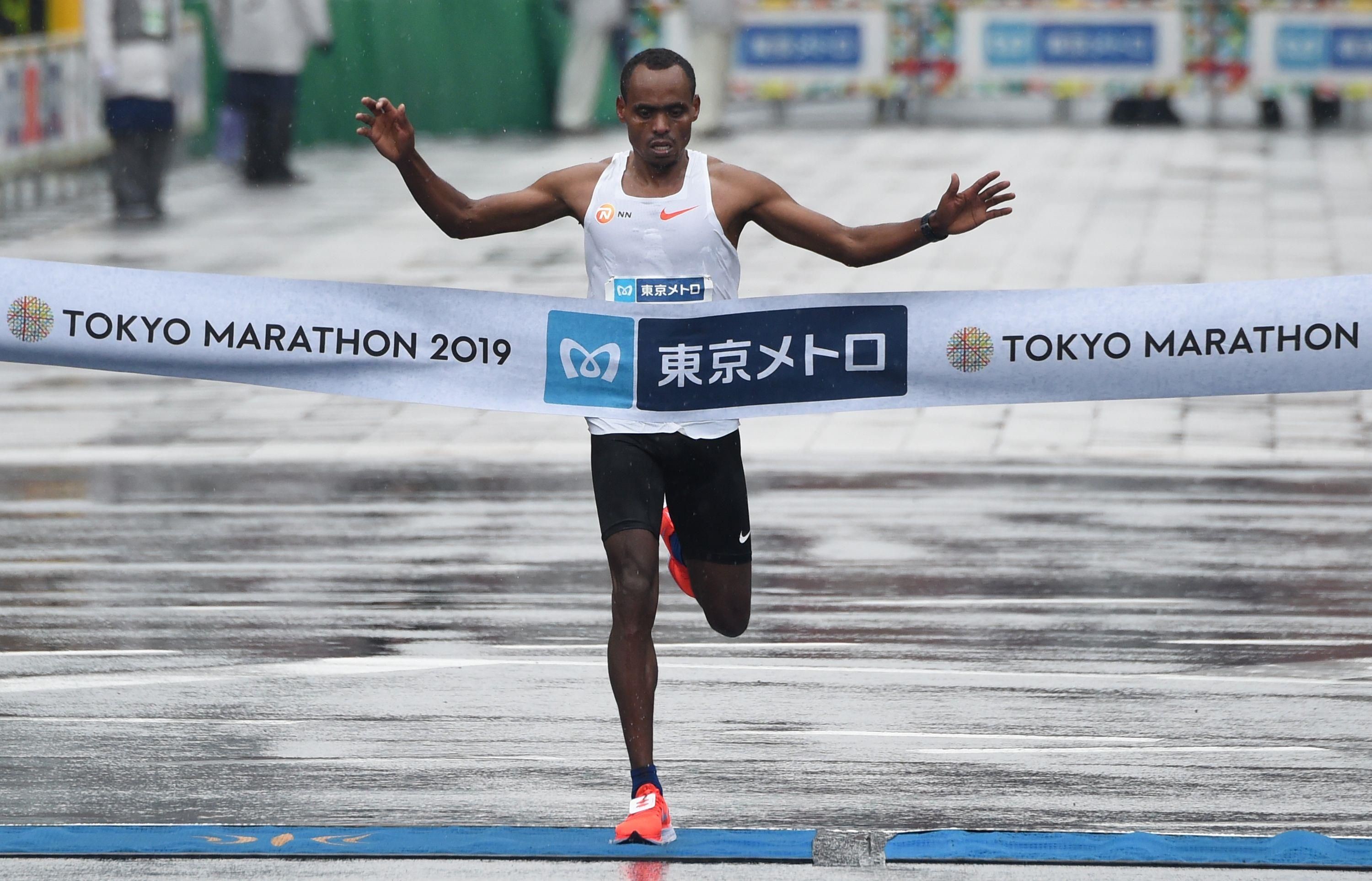
For sheer marathon consistency few can currently match the 26-year-old athlete, who according to his coach, Getaneh Tessema, has the potential to make history.
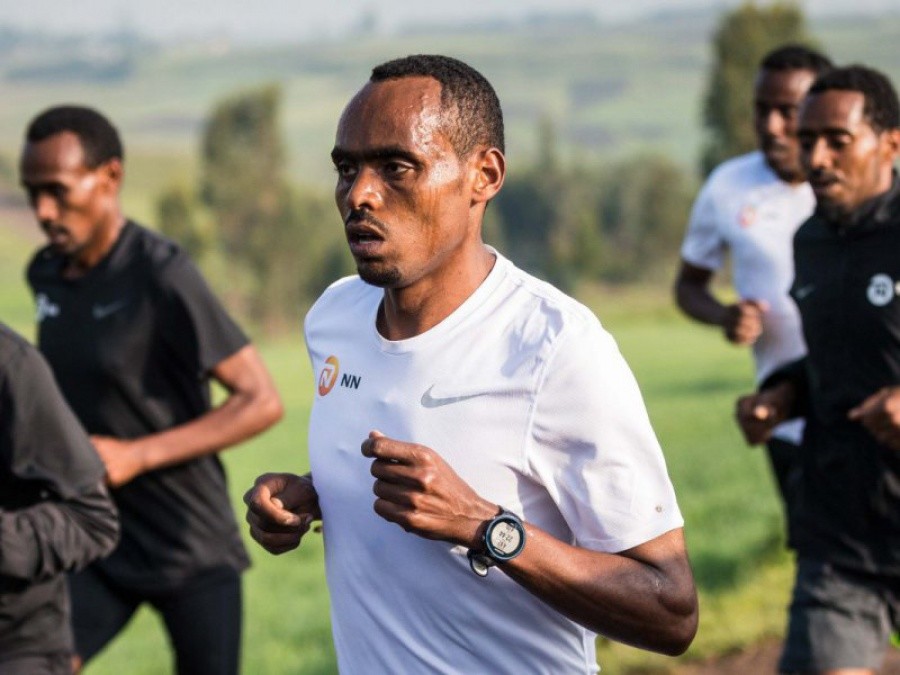
“There is no doubt Birhanu is a quality athlete,” explains Getaneh. “I see that every day in training. If everything goes perfectly, I know he can achieve the same results as Kenenisa and Kipchoge.”
Legese, the third eldest of seven siblings, enjoyed his breakthrough performance at the 2012 10km Great Ethiopian Run when placing second in 28:41 behind 2016 Olympic 5000m bronze medallist Hagos Gebrhiwet.
He continued to make steady progress for the next couple of seasons: in 2013 he clocked a slick 27:34 for 10km on the road in Taroudant and the following year posted a 5000m track PB of 13:08.88 in Shanghai.
Yet it was on the roads where Legese has most excelled and in 2015 he further hinted at his exciting potential by winning both the Berlin (59:45) and New Delhi (59:20) half marathons.
Notable marathon debut
The following couple of seasons he enjoyed intermittent success with victory in the 2016 RAK and 2017 New Delhi Half Marathons yet all too often he was hampered by ongoing shin splints issues, which prevented him from consistently producing his best.
In 2018 Legese made his eagerly awaited marathon debut in Dubai, running an outstanding time of 2:04:15 for sixth. Yet still he craved more.
“I was pleased with the time but not with the position,” he explains.
Stomach issues hampered his efforts later that year at the Chicago Marathon when he wound up tenth in 2:08:41 – more than three-and-a-half minutes behind race winner Mo Farah.
“I was in a lot of pain but I kept on going because I thought the pain would go away,” he recalls. “I was disappointed with the performance but as soon as I returned to training my disappointment disappeared.”
Tokyo win ushers marathon breakthrough
Unlike many elite Ethiopian athletes, Legese has chosen not to live in Addis Ababa but just north of the capital city in the town of Sendafa, where he lives with his brother, Gezahegne, and training partner Tariku Kinfu.
Away from the pollution of the city and living closer to his regular training routes has cut down his commute time to and from training and aided his rest and recovery with the consequence that he enjoyed a smooth build up to the 2019 Tokyo Marathon.
Competing in wet and windy conditions in the Japanese capital he made his winning move just before 35 kilometres, kicking clear of former world half marathon silver medallist Bedan Karoki.
Despite the inclement weather he crossed the line first in 2:04:48 to record the second fastest time in the history of the race and claim a victory, which was pivotal to his career development.
“Winning Tokyo gave me the chance to be invited to other big races and it was a big confidence boost,” he explains. “Financially, it was also a big change for me.”
Sub-2:03 in Berlin
Bolstered by his first Marathon Majors victory and enjoying a trouble-free build up for the 2019 Berlin Marathon, confidence was high he could produce a red hot performance on the course commonly regarded as the fastest in the world.
“I hoped to break the world record that day and that is why I broke clear of the field at 25-k,” explains Legese. “But a few kilometres later I had a problem with my hip, I was feeling pain and that caused me to slow.”
At 38 kilometres he was caught and passed by race winner Kenenisa Bekele, who went on to record victory in 2:01:41 – within two seconds of Eliud Kipchoge’s world record mark. Legese battled on bravely to the finish and was rewarded with a time of 2:02:48 to elevate himself to third on the all-time marathon lists.
Although, understandably, a little frustrated with the hip he was delighted with the time.
“The performance was wonderful,” said Tessema. “It was a good time and finishing position and a very good race from Birhanu. Maybe, he could have waited until 35-k to make his move. If he had then maybe the result might have been different, but that is all with the benefit of hindsight.”
Successful Tokyo defence
Further sheen was added to his growing reputation in the Covid-restricted elite-only 2020 Tokyo Marathon, where the Ethiopian became the first man in history to claim back-to-back wins in the race, recording 2:04:15 despite sustaining a hip injury after just one kilometre and being forced to manage the issue for the remaining 41.
“Birhanu considered dropping out at 35-k but he has a strong mind and kept on running the race,” explains Tessema, his long-time coach.
Launching his winning move at 38.5km he went on to claim a memorable victory and a place in Tokyo Marathon history.
Shortly after his triumph, however, and with the world in the tightening grip of a global pandemic, restrictions in Legese’s homeland led to several weeks without training for the Ethiopian marathon star.
Optimistic of making the Ethiopian team for the 2020 Tokyo Olympics he later learned of the Games’ postponement and rescheduling to 2021.
“It was hard that they had to reschedule the Olympic Games but on the other hand, there was no choice,” he explains. “Everybody’s health and safety was the most important thing.”
(01/05/21) Views: 63World Athletics
20-year-old Norwegian phenom Jakob Ingebrigtsen has already had an incredible career, but he's hungry for a lot more
In a video recently published by European Athletics, Norway’s Jakob Ingebrigtsen discusses his career so far and his hopes for the future. The multiple national and European record holder has had an amazing career so far, and he’s only 20 years old. This short video is a great chance to see the mindset of Ingebrigtsen, which is certainly a contributing factor to his many successes on the race course.
He outlines his goal for the future in the video, and while it is quite simple to explain, it will be far from easy for him to reach: he wants to be the fastest runner ever.
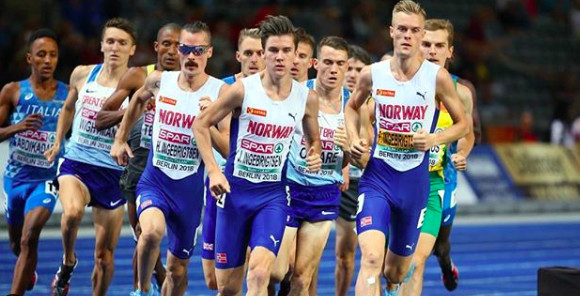
In a video recently published by European Athletics, Norway’s Jakob Ingebrigtsen discusses his career so far and his hopes for the future. The multiple national and European record holder has had an amazing career so far, and he’s only 20 years old. This short video is a great chance to see the mindset of Ingebrigtsen, which is certainly a contributing factor to his many successes on the race course. He outlines his goal for the future in the video, and while it is quite simple to explain, it will be far from easy for him to reach: he wants to be the fastest runner ever.
A family focus
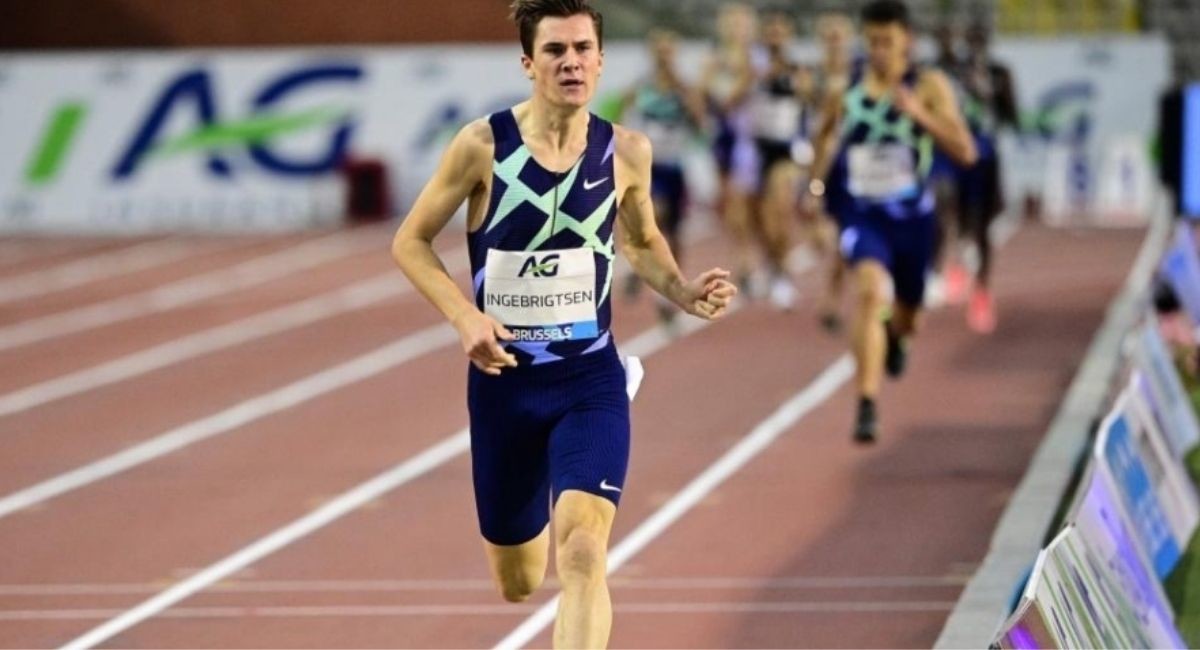
It’s easy to look at Ingebrigtsen and his older brothers Henrik, 29, and Filip, 27, both accomplished runners themselves, and think they have a natural talent for running. That certainly could be part of their success, but Ingebrigtsen doesn’t think so. “You’re not born with talent,” he says. Instead, he says it comes down to your effort and how much work you put into the sport. “When I was four, five, six years old, people said that I had more talent than them, but I’d already run maybe 10 times more than the people I was competing against.”
Ingebrigtsen talks about his family’s focus, which is less on running and more on winning. From a young age, he watched his brothers run and he decided he had to beat them one day. After chasing them for years, he has accomplished that goal, as Ingebrigtsen has a faster PB than his brothers in every event he has raced in his career except for the mile (a race in which Filip and Henrik have both run faster than their younger brother).
Hard to satisfy
Ingebrigtsen expects a lot from himself, and this mindset can leave him disappointed even when he performs well. He points to the 2017 European U20 Championships in Grosseto, Italy. “I don’t look back at Grosseto as a good championship,” he says. He fell in the 1,500m and couldn’t recover, ultimately finishing in eighth place. Even though he ran to a pair of gold medals in the 5,000m and 3,000m steeplechase later on in the week, Ingebrigtsen still considers that campaign to be a negative experience.
The following year, his father (and coach) asked him what his goals were for the season. Just 17 years old, Ingebrigtsen said he wanted to win at the senior European Championships. He says his father scoffed at him, telling him to be serious, but Ingebrigtsen wasn’t joking. His goal was to win gold, and that’s exactly what he did. Several months later, at the European Championships in Berlin, he ran to gold in the 1,500m and 5,000m, beating his brothers in both races.
Inebrigtsen has had a legendary career already, and he’s still so young. Now just 20, he still has many years of running ahead of him, and although he has some incredible achievements to his name already, he says he wants a lot more. “My dream is to be as good a runner as I can be, to win as much as possible and to run as fast as possible,” he says. “I wouldn’t say that I’m 100 per cent satisfied if I’m not the fastest ever. I think I can go faster. But only time will tell if I’m able to.” It’s a big goal, but aiming to beat his older brothers when he was a young boy and to win at the European Championships as a 17-year-old were both lofty dreams, too, and he still managed to do both.
(01/06/21) Views: 56Ben Snider-McGrath
Kenya's half marathon record holder Kibiwott Kandie says he is shifting his focus to the 10,000m and looks to earn a ticket for this year's Tokyo Olympics
Kenya's half marathon record holder Kibiwott Kandie says he is shifting his focus to the 10,000 metres as he looks to earn a ticket for this year's Tokyo Olympics and help end his country's 53-year wait for a gold medal in the event.
Kandie smashed the half marathon world record by 29 seconds at the Valencia Half Marathon last month, finishing in 57 minutes and 32 seconds and breaking the previous record of 58:01 set by compatriot Geoffrey Kamworor in September 2019.
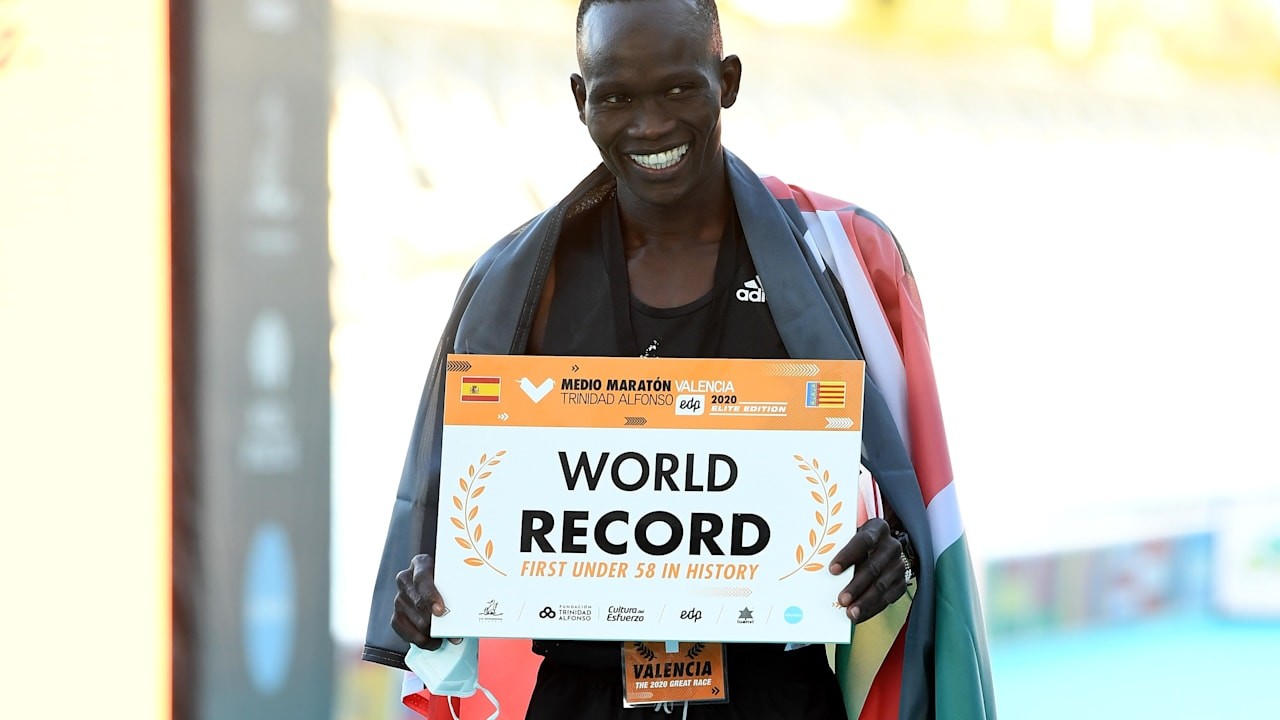
Kenya's last Olympic gold in the 10,000m came in 1968 when Naftali Temu triumphed in Mexico City, and Kandie is hoping to go one better than Paul Tergat and Paul Tanui, who won silver in 2000 and 2016 respectively.
"I have the drive to prove to the world that I can also perform in track, that is why I made a decision to compete in a 10,000m event with the aim of securing an Olympic ticket," Kandie told the Xinhua news agency.
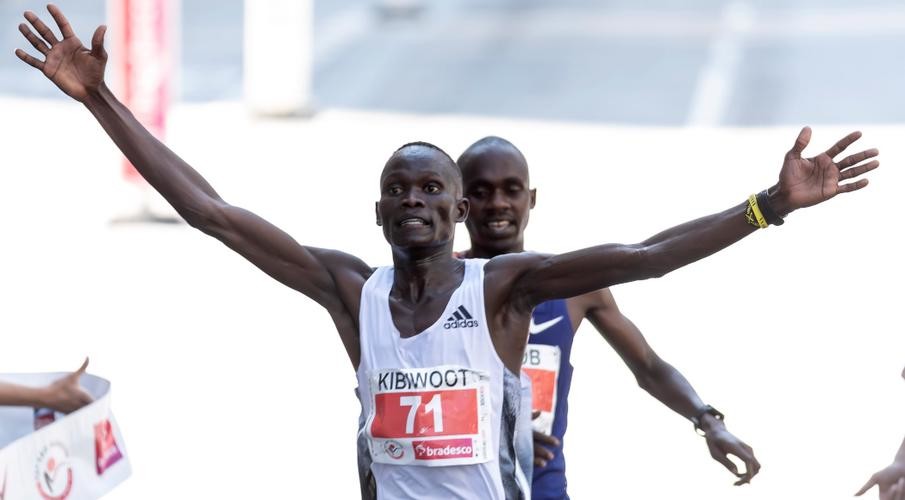
"I will be more than happy to see the Kenyan flag being hoisted for the 10,000m in Tokyo.
"I know we, as a country, haven't posted the best results in 10,000m recently but I believe with team work and early preparations we will be able to achieve good results in the Tokyo Games."
The Tokyo Olympics are due to take place from July 23 to Aug. 8 after being pushed back by a year because of the novel coronavirus pandemic.
(01/07/21) Views: 55Sportstar
Japan bans foreign visitors as COVID-19 cases spike and new variant detected
The Japanese Government has announced that foreign travellers will not be permitted to enter the country until at least the end of January due to a rise in COVID-19 cases in the nation due to host the next Olympics and Paralympics.
The new measure is set to start tomorrow and will continue throughout January.

It follows a record daily increase in new coronavirus cases - including at least two of a new, faster-spreading strain of the virus.
Japan reported in excess of 3,500 new cases yesterday.
A further 50 deaths were reported as well.
As Japan tightens its border, citizens and foreign residents will be required to quarantine for two weeks upon returning to the country and must show proof of a negative COVID-19 test within 72 hours of their departure for Japan.
They will also be tested upon arrival.
Digital Transformation Minister Takuya Hirai has also spoken of a tracking system for overseas travellers being developed to monitor virus spread, with the system expected to be in place before the Olympics and Paralympics are held.
"There will be no point if we do not implement it, so that you will be allowed to enter the country unless you use it," Hirai said, Kyodo News reports.
Hirai suggested that tracking will be delivered through GPS technology.
The Tokyo 2020 Olympics are currently scheduled to take place from July 23 to August 8 in 2021, having been postponed by a year due to the COVID-19 pandemic.
The Paralympics are due to take place from August 24 to September 5.
With coronavrius cases rising in the host nation and across other parts of the world, notably Europe and the Americas, doubts remain over whether the Games will be able to go ahead - and if they do, whether international visitors or even domestic spectators will be allowed to attend events
(01/01/21) Views: 52Inside The Games
New 30 for 30 Film Reveals Truths About the Tarahumara
If you're new to running and have been inundated with information about new, fancy shoes with thick, bouncy soles, it will come as somewhat of a surprise that just 11 years ago, many American runners were part of a minimalist running movement, spurred by the book Born to Run. Back then, it was all the rage to wear as little on our feet as possible.
The book by Christopher McDougall was about the Tarahumara people living in Mexico's Copper Canyon, who run hundreds of miles at a time, either barefoot or wearing sandals with old, recycled tires serving as tread. They rarely get injured and they can run forever, or so it seems. The premise of the book was that their durability was due to the biomechanics they honed by not wearing running shoes. And as the book gained in popularity, the industry pounced on the opportunity to sell something new.
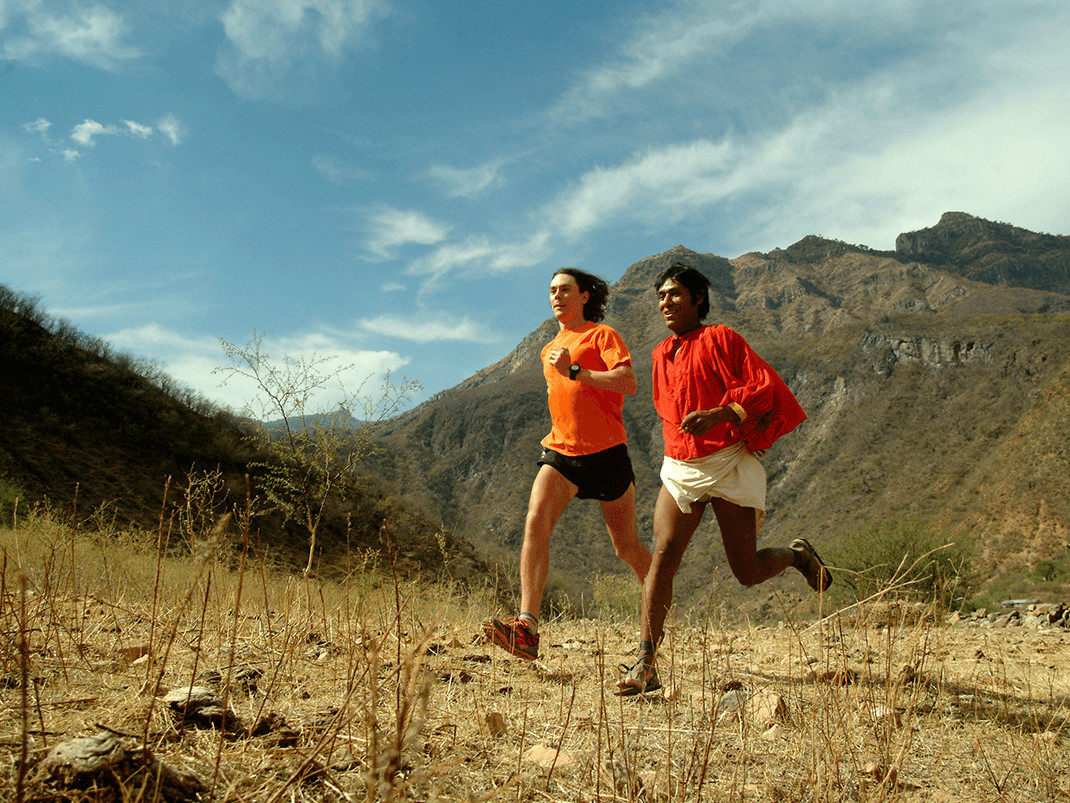
But during a pivotal moment in a new ESPN 30 for 30 documentary, The Infinite Race, which debuts at 8 p.m. Eastern on Tuesday, December 15, Silvino Cubesare, a Tarahumara ultrarunner and farmer, watches footage of McDougall running barefoot in Central Park. Cubesare shakes his head and says, "I don't know what they are thinking. Why do they want to run barefoot? I think they are crazy."
If runners can afford shoes, why wouldn't they use them?
The Infinite Race seeks to expose another side of the story, beginning with the fact that the Tarahumara name came from the Conquistadors. The Indigenous people call themselves the Raramuri. The audience is introduced to Irma Chavez, a Raramuri activist who adds context to the reasons why running is part of their culture-a tradition that, unsurprisingly, does not stem from lack of running shoes or organized ultramarathons like the local Ultra Maraton Caballo Blanco (more on that later), but is in fact rooted in survival and spirituality.
In the documentary, Chavez explains the "races" that the Raramuri historically participate in. The men run rarajipari, kicking a ball and chasing it together over long distances. The women pass a hoop with sticks that they carry on the run; this version is called ariweta. What the minimalist running shoe craze mostly missed in 2009 was that the Tarahumara were also running from organized crime groups that were taking over land to plant marijuana and poppy. The Raramuri people have been recruited by cartels to run the drugs across the U.S. border.
"Many families were forced out of their communities because of violence," Chavez says. "Unfortunately, you have to run away before they kill you."
The film intertwines the story behind the Ultra Maraton Caballo Blanco, a local race that was founded in 2003 by American ultrarunner Micah True, who played a central role in the Born to Run book, too. His intention was to help the Tarahumara people preserve their running heritage while also aiding a region experiencing hunger and a lack of clear water. True, who died of a heart attack in 2012, gave away cash prizes as well as corn, and the race started attracting more Americans to the area. But in 2015, gang violence threatened the safety of the event, and the American organizers called off the official race just hours before it was set to begin.
The local runners, however, raced anyway-they needed the corn vouchers to feed their families. The film covers how the events of that year unfolded from the perspective of Cecilia Villalobo, who was the director of tourism in Urique (where the race is held) at that time, and from the viewpoint of Josue Stephens, the former U.S. race director. Unsurprisingly, they viewed the circumstances-and the way they were handled-differently.
"The Infinite Race is about how outsiders, many well-intentioned, impact a community in unexpected ways," says Bernardo Ruiz, who directed the documentary. "It is also about the starkly different ways people can view events based on the economic, political, and cultural realities they inhabit."
The Infinite Race is an important story, especially for those who bought into the Born to Run frenzy and added the Caballo Blanco race to their bucket lists. It's through the voice of Chavez that we see why running has always been so critical to the Indigenous people there-a critical perspective for runners in understanding the impact they can have on the communities and cultures where they race and the narratives they choose to hear about them.
"What interests me is that space where white American athletes and Raramuri athletes negotiate power," Ruiz says. "And I am most interested in the perspective of people like Irma Chavez, who views an ultramarathon like a short spring, when you consider the long arc of history."
(01/02/21) Views: 49Trail Runner Magazine
2021 Chevron Houston Marathon to kick off virtually this week
Daniel Dannug and his close-knit running group were in the middle of a training run when they heard it:
“Six feet, gentlemen. Six feet!” a stranger yelled as he drove by a Northeast Houston running trail.
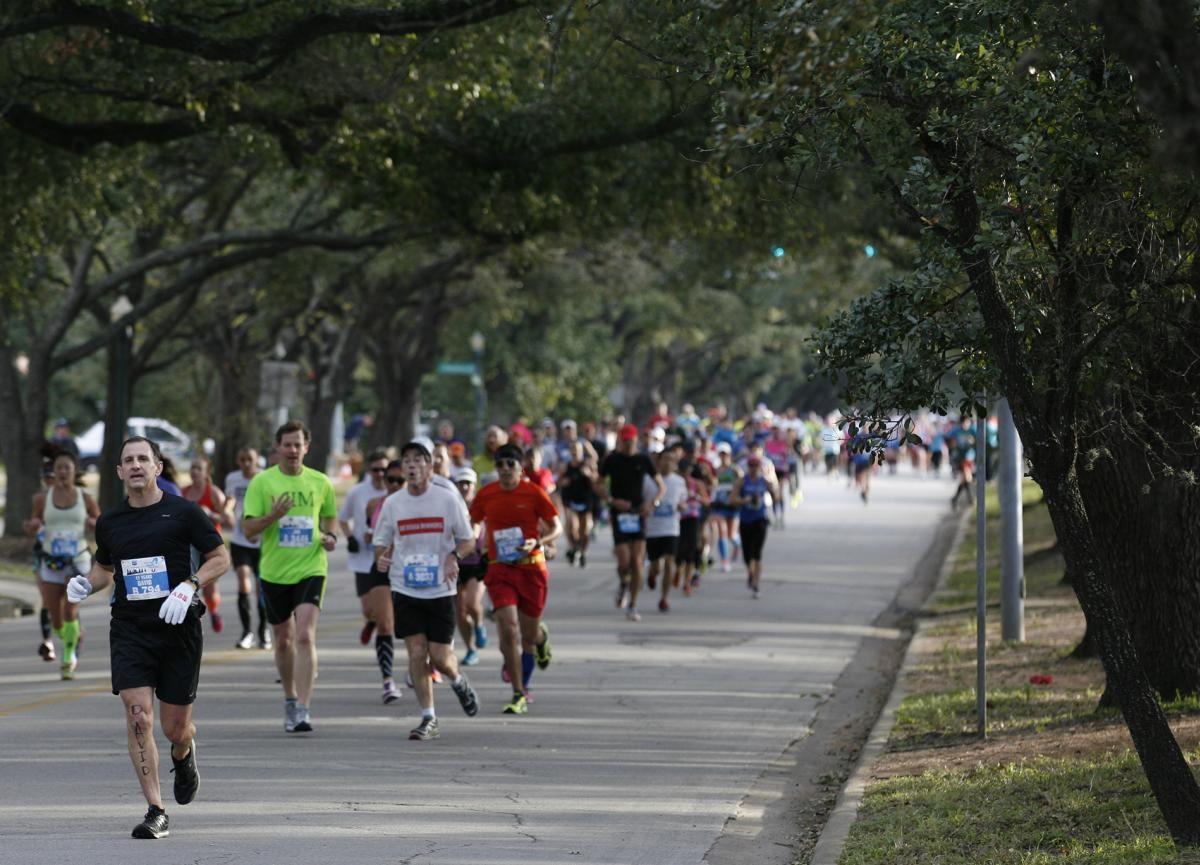
Dannug acknowledged that his running crew goes against some COVID-19 safety guidelines recommended by the Centers for Disease Control and Prevention: No one lives in the same household and some have higher exposure rates because they don’t work from home.
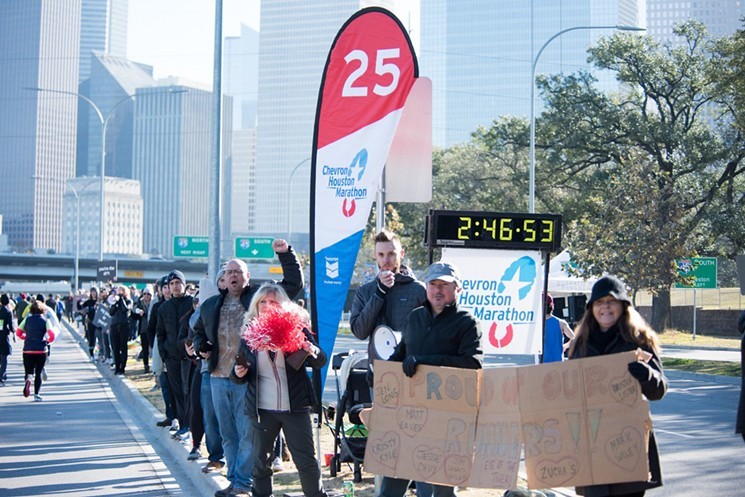
But they need each other to accomplish their goal of running a marathon, he said.
“We’re all first-time marathoners, and that’s what motivated us to continue pushing forward; this is all brand-new territory for us,” Dannug, 39, said. “It’s me and four other people every Saturday going out to train. We had this mantra: Keep pushing. It’s a strong mindset to try to achieve, and we’re seeing it through.”
Dannug co-founded Champions Running Association, a run club serving Houston’s northeast suburbs with 180 members, in 2017. Back in April, Dannug ran his first virtual race feeling what he called a “virtual high.” That quickly turned to virtual fatigue, and he lost all motivation to run solo by the summer.
“I took a break after that. I knew I wanted to save any motivation for doing a virtual race for the Chevron (Houston Marathon),” he said. “It would have been so much easier to fold, but that’s not how I’m wired and I’m hyped for other people.”
On Jan. 17, Dannug and 21 others from Champions Running Association will run together for the 49th annual Chevron Houston Marathon, which will be held virtually for the first time.
The event’s three races — a 5K, half-marathon and marathon — can be accomplished any day, time or location between Jan. 8 and Jan. 17. The only rule is once a race is started, it must be finished in the same go but there is no six-hour limit, like in typical years.
More than 9,300 runners signed up, said Muffy King, marathon marketing director. Registration is closed since virtual capacity was met, she said, adding that orders for T-shirts, finisher medals, drinking mugs and swag had to be ordered far in advance.
About 200 runners have registered to run all three events, which is impossible in a normal year, King said. Participants can run the 5K one day, the half-marathon another day and a marathon on a third day.
(01/04/21) Views: 49
Julie Garcia
73-year-old Kmoin Wahlang is one of India’s oldest woman marathon runner
A mother of 12, a grandmother to almost 30 kids, Kmoin Wahlang is one of India’s oldest woman marathon runner.
Hailing from the north-eastern state of Meghalaya, Wahlang grabbed the eye-balls of sports fans and fitness enthusiasts when she made her presence felt during the Tata Mumbai Marathon in January 2019.
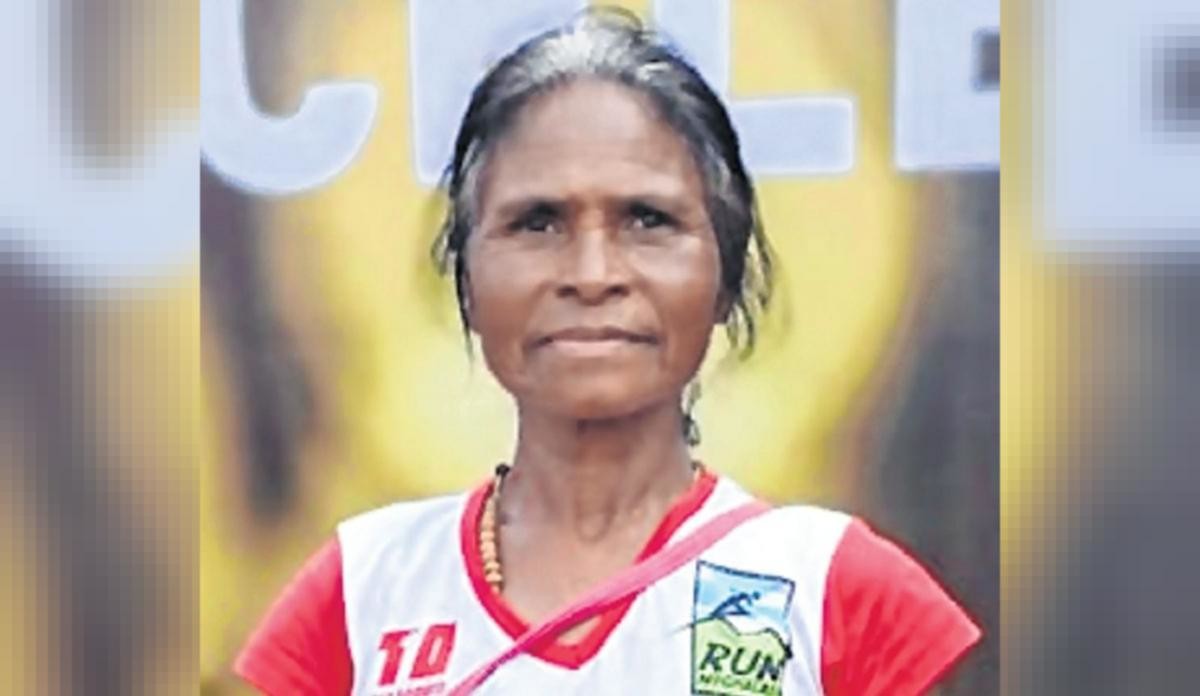
While many of us continue to blatantly state our age as an excuse when we fail to execute any strenuous physical activity, Wahlang successfully finished a marathon run at the age of 71 years!
She completed the 42.195km run with a timing of 4 hours 33 minutes and 55 seconds. If the age and the timings didn’t impress you, then note that Wahlang finished the marathon at 89th position out of total 520 women runners during that edition of the Tata Mumbai Marathon.
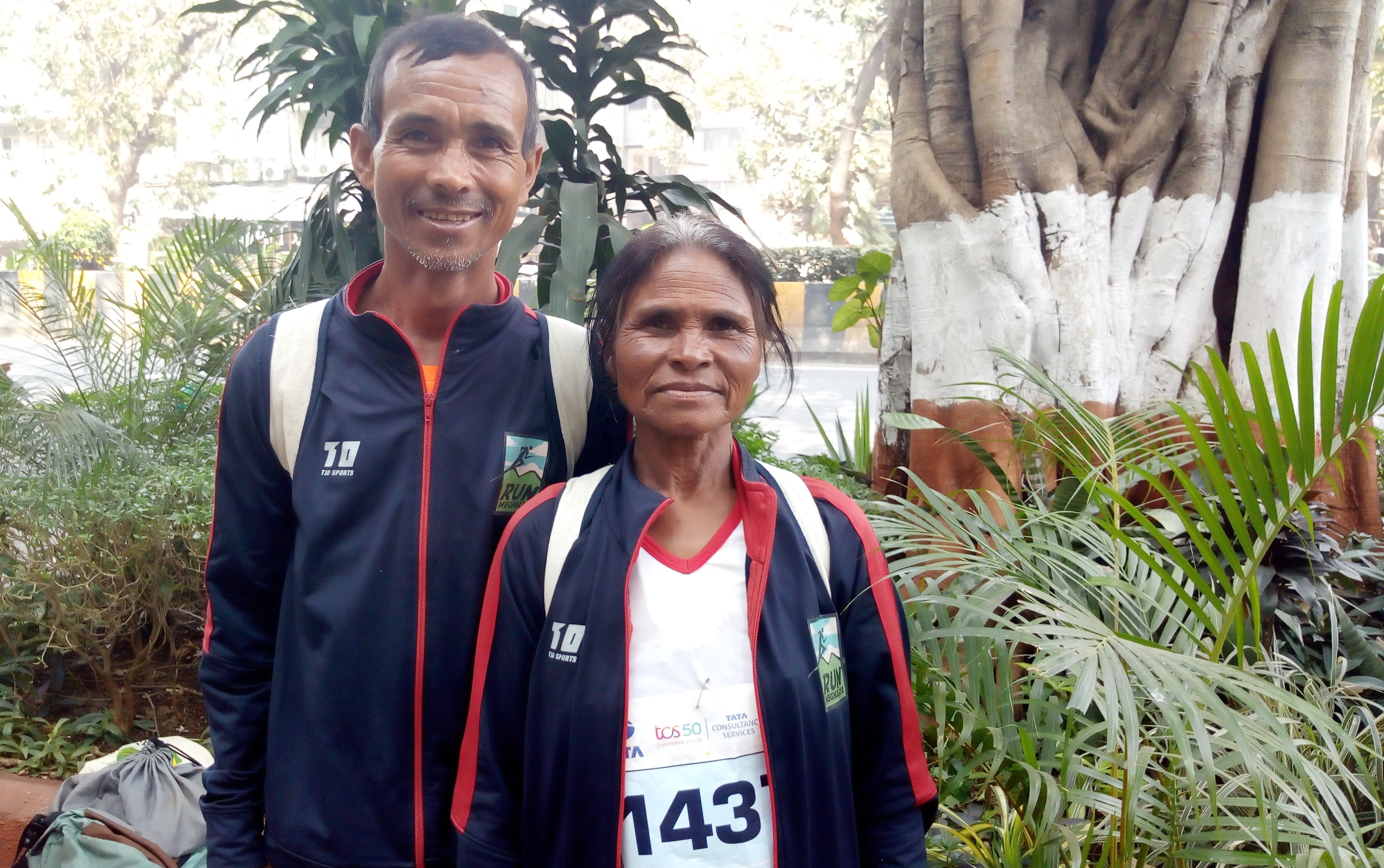
Though she can only converse in her mother tongue, Wahlang didn’t show any discomfort while running the Mumbai Marathon which incidentally was her first marathon outside the city of Shillong. Instead, she showcased extraordinary consistency during the entire course of the race and rarely dropped below the speed of 9km per hour.
Surprisingly, Wahlang’s running career can be traced back to almost two decades. The now 73 year old faced severe stomach issues after the birth of her twelfth child way back in 2001. She started walking extensively to counter this health issue and slowly this walking made way for running.
Wahlang was first discovered by a non-profit organisation called RUN Meghalaya and has since been participating in various marathons in her home state. She had even completed the 45km run in the Mawkyrwat Ultra Marathon before coming down to Mumbai for the Tata Marathon.
(01/04/21) Views: 49Abhijit Nair


